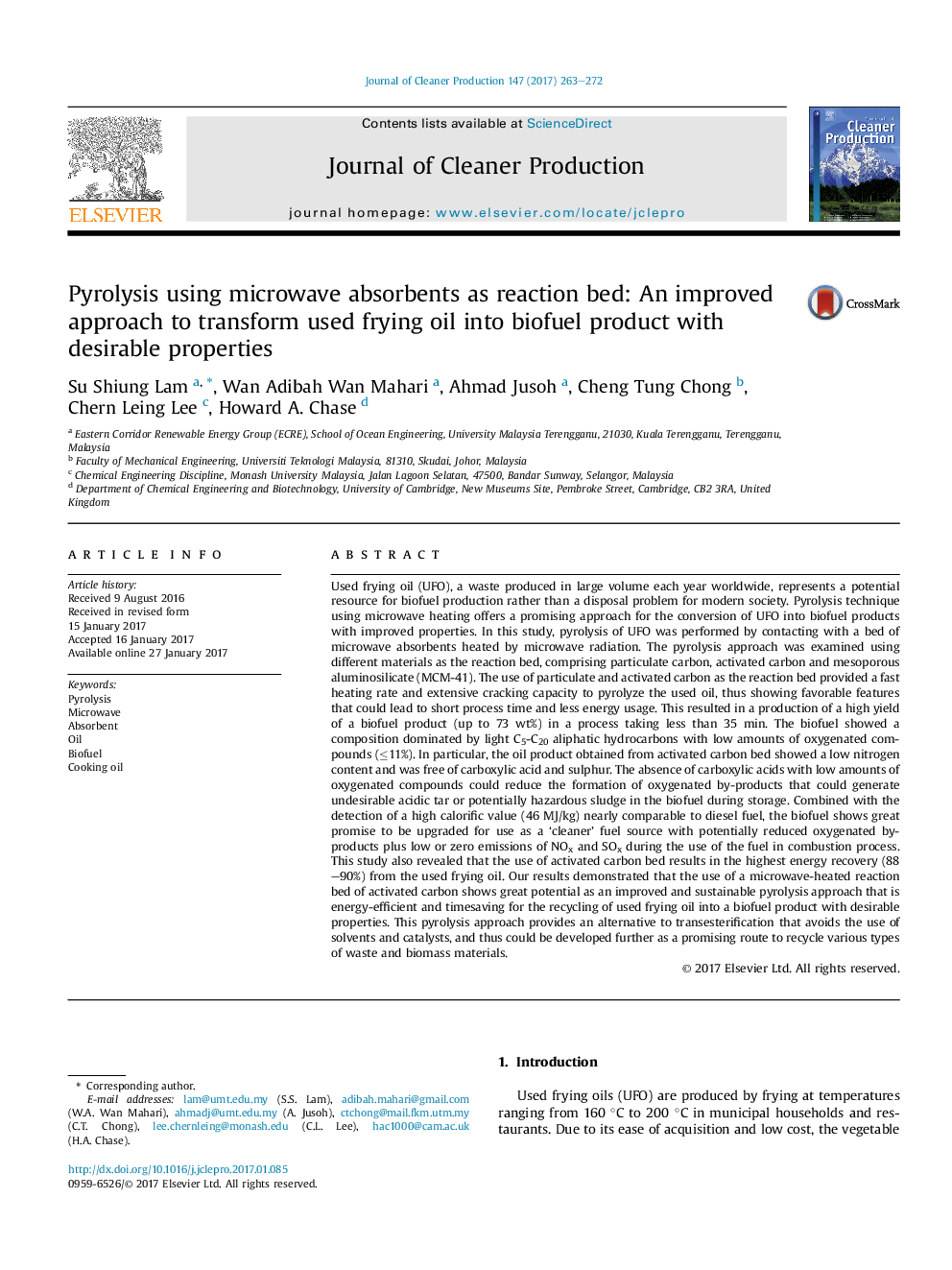| کد مقاله | کد نشریه | سال انتشار | مقاله انگلیسی | نسخه تمام متن |
|---|---|---|---|---|
| 5481477 | 1522106 | 2017 | 10 صفحه PDF | دانلود رایگان |

- Used frying oil is microwave-pyrolyzed via a reaction bed of microwave absorbents.
- Activated carbon bed provides fast heating and good pyrolysis cracking capacity.
- 73Â wt% yield of biofuel with high energy recovery is obtained in <35Â min.
- Biofuel is diesel-like and dominated by light C5-C20 hydrocarbons.
- Biofuel is free of carboxylic acid, sulphur, plus low oxygen and nitrogen content.
Used frying oil (UFO), a waste produced in large volume each year worldwide, represents a potential resource for biofuel production rather than a disposal problem for modern society. Pyrolysis technique using microwave heating offers a promising approach for the conversion of UFO into biofuel products with improved properties. In this study, pyrolysis of UFO was performed by contacting with a bed of microwave absorbents heated by microwave radiation. The pyrolysis approach was examined using different materials as the reaction bed, comprising particulate carbon, activated carbon and mesoporous aluminosilicate (MCM-41). The use of particulate and activated carbon as the reaction bed provided a fast heating rate and extensive cracking capacity to pyrolyze the used oil, thus showing favorable features that could lead to short process time and less energy usage. This resulted in a production of a high yield of a biofuel product (up to 73 wt%) in a process taking less than 35 min. The biofuel showed a composition dominated by light C5-C20 aliphatic hydrocarbons with low amounts of oxygenated compounds (â¤11%). In particular, the oil product obtained from activated carbon bed showed a low nitrogen content and was free of carboxylic acid and sulphur. The absence of carboxylic acids with low amounts of oxygenated compounds could reduce the formation of oxygenated by-products that could generate undesirable acidic tar or potentially hazardous sludge in the biofuel during storage. Combined with the detection of a high calorific value (46 MJ/kg) nearly comparable to diesel fuel, the biofuel shows great promise to be upgraded for use as a 'cleaner' fuel source with potentially reduced oxygenated by-products plus low or zero emissions of NOx and SOx during the use of the fuel in combustion process. This study also revealed that the use of activated carbon bed results in the highest energy recovery (88-90%) from the used frying oil. Our results demonstrated that the use of a microwave-heated reaction bed of activated carbon shows great potential as an improved and sustainable pyrolysis approach that is energy-efficient and timesaving for the recycling of used frying oil into a biofuel product with desirable properties. This pyrolysis approach provides an alternative to transesterification that avoids the use of solvents and catalysts, and thus could be developed further as a promising route to recycle various types of waste and biomass materials.
Microwave pyrolysis using a reaction bed of microwave absorbent as an innovative approach for recovery of biofuel product from used frying oil.189
Journal: Journal of Cleaner Production - Volume 147, 20 March 2017, Pages 263-272